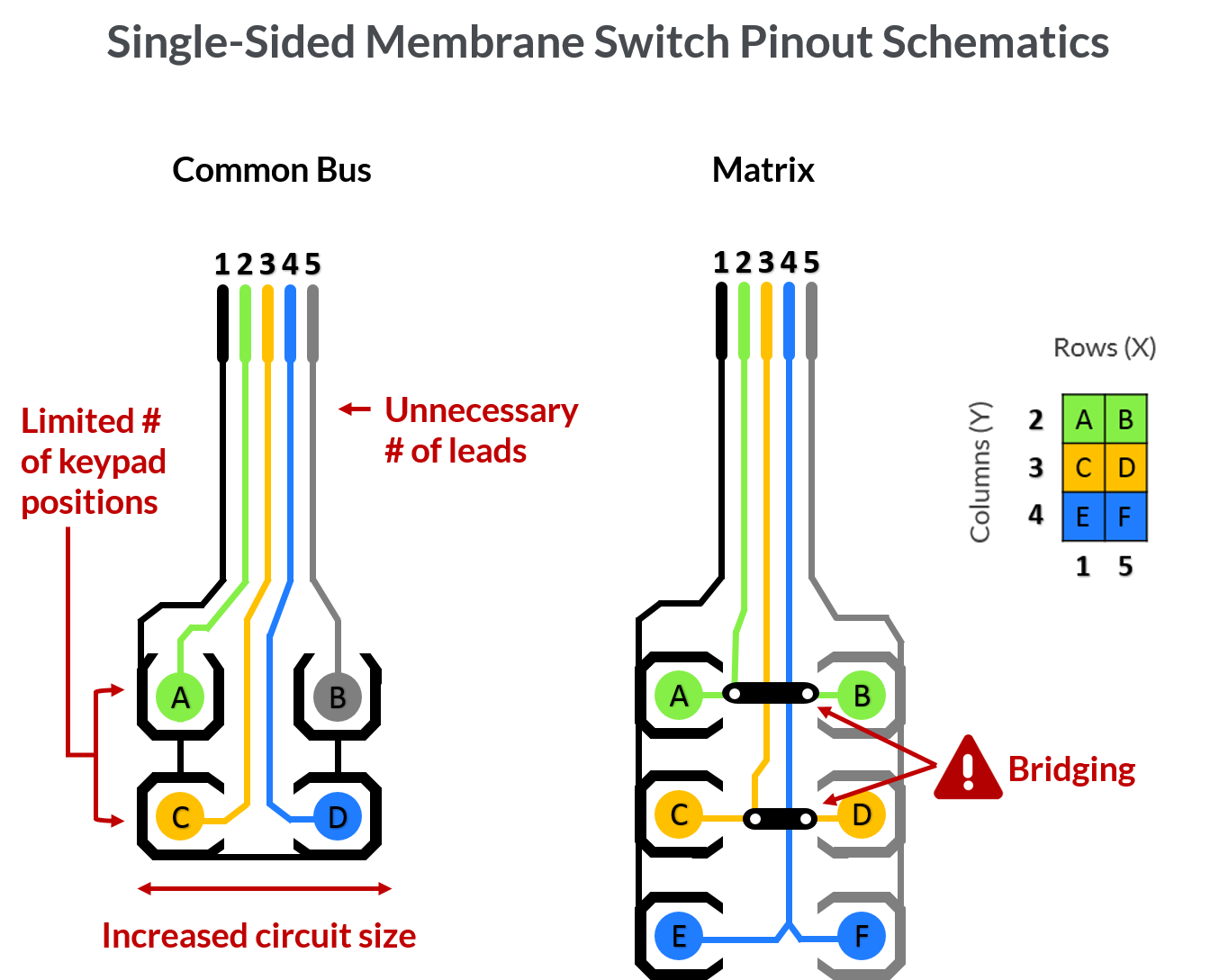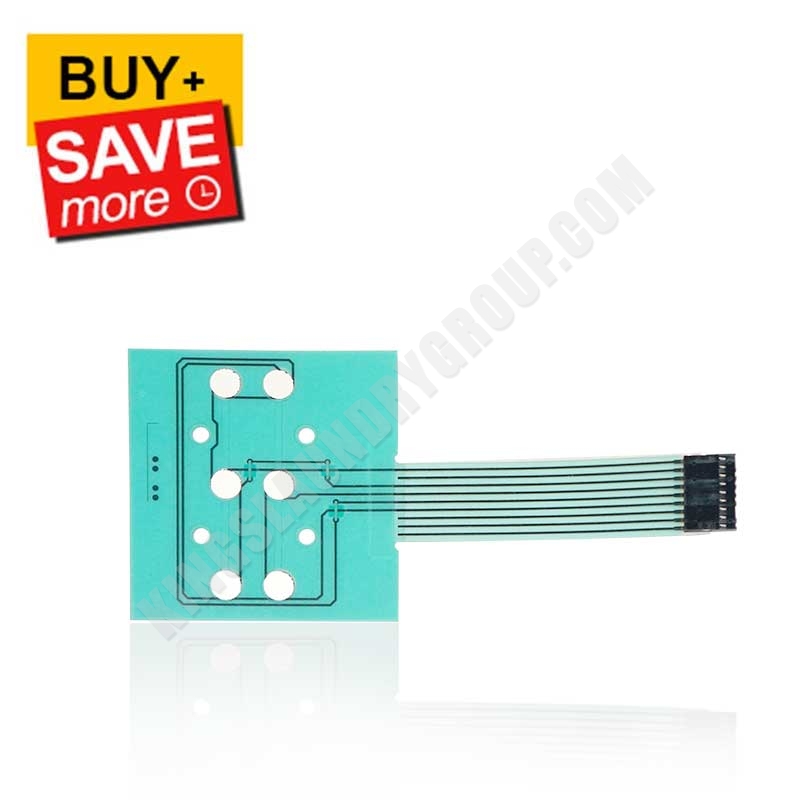Exactly How to Guarantee Long Life and Reliability with a High-Quality Membrane Switch
Exactly How to Guarantee Long Life and Reliability with a High-Quality Membrane Switch
Blog Article
The Role of Membrane Layer Changes in Enhancing Device Functionality and Visual Appeal
Membrane layer switches stand for a considerable advancement in user interface technology, seamlessly incorporating use with aesthetic appeal. Their design is not just useful, using responsive controls in a small form, however additionally customizable, allowing for one-of-a-kind branding and aesthetic engagement. As markets increasingly prioritize customer experience, the ramifications of these attributes expand beyond simple benefit, affecting item design and consumer fulfillment. What continues to be to be checked out is how these aspects will evolve in feedback to emerging patterns and technical innovations, forming the future of human-device communication.
Comprehending Membrane Change Technology

The visuals overlay functions as the noticeable surface, often published with icons and tags that direct customer interaction. Underneath this layer, the spacer functions as a separator, guaranteeing that the conductive layer only makes call when a button is pressed. The conductive layer, typically made of a conductive ink or product, completes the circuit and sends signals to the tool's electronics.
Durability is a significant advantage of membrane buttons, as they are resistant to wetness, dirt, and impurities, making them ideal for various environments. Furthermore, membrane buttons can be tailored in regards to shape, size, and style, permitting makers to customize user interfaces to details device demands. This convenience adds to their widespread usage across industries, from consumer electronic devices to medical gadgets.
Use Benefits of Membrane Switches
The use advantages of membrane switches are apparent in their user-friendly style and straightforward functions. These switches help with uncomplicated communication by integrating responsive responses and recognizable signs, which improve the individual experience via clear interaction of feature (Membrane Switch). The flat profile of membrane switches over permits very easy combination into numerous tools, decreasing the finding out curve for individuals unfamiliar with intricate controls
Additionally, membrane switches are frequently made with sensitivity in mind, allowing users to engage with controls easily. This particular is particularly helpful in settings where fast reactions are essential, such as medical tools and commercial machinery. Their resistance to moisture and contaminants better makes certain reputable procedure, promoting customer self-confidence in diverse setups.
Moreover, membrane buttons can be customized to fit certain applications, accommodating distinct customer needs and preferences. This flexibility fosters a feeling of ownership amongst customers, as they can engage with controls that really feel tailored to their demands.
Visual Enhancements Via Style
Aesthetic improvements play a significant role in the total appeal and functionality of devices furnished with membrane layer switches. These buttons use versatile layout possibilities that can be tailored to satisfy brand identification and customer preferences. The capability to incorporate vivid shades, personalized graphics, and differed textures permits makers to create aesthetically striking interfaces that resonate with customers on an emotional degree.
The flexibility of membrane layer button design also facilitates the integration of one-of-a-kind shapes and layouts, contributing to a streamlined look that boosts the customer experience. This not just makes gadgets much more appealing but additionally aids in instinctive navigating, as customers can quickly identify useful areas and controls. In addition, progressed printing innovations make it possible for the reproduction of detailed styles and high-resolution pictures, better raising the visual high quality.
Furthermore, using backlighting in membrane buttons can dramatically enhance presence and appeal, especially in low-light atmospheres. This combination of aesthetics and performance promotes an interesting user experience, making devices not only much more enjoyable to utilize yet also more lined up with contemporary layout fads. Inevitably, visual enhancements through mindful membrane layer button layout can transform common gadgets right into compelling, easy to use products.
Applications in Different Industries
In various markets, membrane buttons have become indispensable parts that boost capability and functionality throughout a large range of devices. These cutting-edge switches find applications in markets such as healthcare, customer electronics, vehicle, and commercial equipment.
In the healthcare market, membrane layer buttons are generally utilized in medical gadgets, such as diagnostic tools and individual monitoring systems, where they give user-friendly user interfaces that enhance individual interaction while maintaining health. In customer electronic devices, membrane switches help with easy to use controls in home appliances, remote controls, and pc gaming tools, using smooth operation and visual appeal.

Future Patterns in Membrane Switches
Emerging trends in membrane layer buttons are readied to transform interface throughout different applications, driven by innovations in technology and increasing consumer demands for functionality and style. One significant trend is the incorporation of capacitive touch modern technology, which uses a much more responsive and modern user experience compared to standard mechanical buttons (Membrane Switch). This shift not only enhances use yet additionally permits for sleeker tool aesthetic appeals
Furthermore, the integration of personalized graphics and backlighting is ending up being progressively preferred. Manufacturers are leveraging ingenious printing methods and LED innovation to produce aesthetically appealing interfaces that provide to specific customer requires while enhancing gadget visibility in different lighting problems. This personalization fosters a stronger emotional connection in between users and their gadgets.

Verdict
To see here conclude, membrane switches over substantially boost both functionality and appearances in modern-day tools. Their intuitive layout, responsive controls, and personalized graphics facilitate customer interaction, especially in vibrant environments. Furthermore, the unification of dynamic shades and backlighting not just boosts aesthetic appeal but likewise improves see post performance, enabling reliable navigating in numerous lights conditions. As sectors remain to evolve, the adaptability and innovative possibility of membrane layer buttons will likely play a progressively crucial function in tool design and user experience.
Report this page